The Vancouver Canucks have a long history of franchise-altering transactions. Through their history, team management has never been shy about pulling the trigger on the big deal. It seems every year the Canucks make at least one major transaction that sets the entire hockey world abuzz.
While Vancouver may not be shy in making a trade, that doesn’t mean they all work out perfectly. For better or worse, these trades have all changed the complexion of the franchise.
The Best
Through their 50-year history, the Canucks have made their fair share of quality trades that shaped the direction the team has gone, including dealing fan favourites to acquiring high draft picks. However, these five trades are truly in a league of their own and deserve special mention.
5. Canucks Acquire Roberto Luongo From Florida Panthers
2006: Canucks acquire Roberto Luongo, Lukas Krajicek, and a 2006 6th round pick from the Florida Panthers for Todd Bertuzzi, Bryan Allen and Alex Auld
Starting off the list is Roberto Luongo, the best goaltender in Canucks history.
Related: 7 Things About Roberto Luongo
When this trade was first made, it shocked the hockey world and it appeared as though the Canucks gave up a lot to acquire the former Panthers netminder. Luongo was made available because he and Florida could not agree on a new contract, while Todd Bertuzzi needed a change of scenery after the Steve Moore incident.
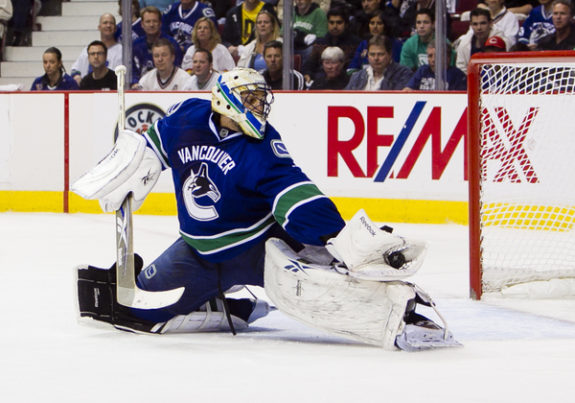
Alex Auld was seen as a promising goalie prospect while Bryan Allen was a steady, reliable defenceman. The package was a lot at the time, but it was a huge win for Vancouver. Bertuzzi would only play seven games as a Panther, spending most of the season on the injured list, while Luongo went on to become the Canucks’ all-time wins leader among goaltenders. Over his eight-and-a-half seasons with the team, he won the William M. Jennings Trophy in 2011, led the team to the 2011 Stanley Cup Final, and was temporarily the team’s captain.
4. Canucks Trades Trevor Linden to the New York Islanders in Exchange for Todd Bertuzzi
1998: Canucks trade Trevor Linden to the New York Islanders for Todd Bertuzzi, Bryan McCabe and a 1998 3rd RD Pick
Bertuzzi’s second appearance on this list ranks fourth in the Canucks’ best trades of all time, though this time it was his acquisition that was the big win.
Linden was on his way out of Vancouver at the time of the trade. After Mark Messier was signed and was given the captaincy (sorry Canucks fans), most fans recognized Linden, who was declining from his prime years, could be leaving the team.
Then-Islanders GM Mike Milbury stepped up, dealing a young Bertuzzi and Bryan McCabe for the former Canucks captain. The bruising power forward would go on to become a fixture for his new squad, forming part of the “West Coast Express” line and putting up dominant scoring numbers. McCabe, meanwhile, would only play two seasons in Vancouver before being traded again. Even the sixth-round pick turned into Jarkko Ruutu, who was a solid role player. Big win for the Canucks.
3. Canucks Acquire Cliff Ronning From Blues
1991: Acquired Cliff Ronning, Geoff Courtnall, Robert Dirk, Sergio Momesso and 1992 5th RD pick from the St. Louis Blues for Dan Quinn and Garth Butcher
This trade was one of the major moments in Canucks history. One that truly shaped the future of the franchise.
Key contributors to the team’s run to the 1994 Stanley Cup Final were acquired in this deal with the St. Louis Blues. Ronning, Geoff Courtnall, and Sergio Momesso were key pieces in the playoff run (Robert Dirk was traded to the Chicago Blackhawks during the season). The former two players were top-six scorers and the latter was an important role player, providing much-needed grit and skill. Courtnall and Ronning combined for 34 points in the Canucks’ cinderella run to the final, with the latter playing the second-line centre role next to Momesso and Martin Gelinas. The trade essentially shaped the team’s roster.
Related: Pavel Bure – A Tribute to the Russian Rocket
Dan Quinn, meanwhile, would only play 14 games with the Blues. Losing Garth Butcher hurt, but the return was so massive and Dirk effectively acted as his temporary replacement. This was a major win for Vancouver.
2. Canucks Trade Picks and Bryan McCabe to Draft Sedins
1999: Canucks deal Bryan McCabe and draft picks to acquire first and second overall picks in 1999 Draft
Originally, I left this trade off the list because it was technically multiple deals, but the impact it ultimately made was too great to not mention.
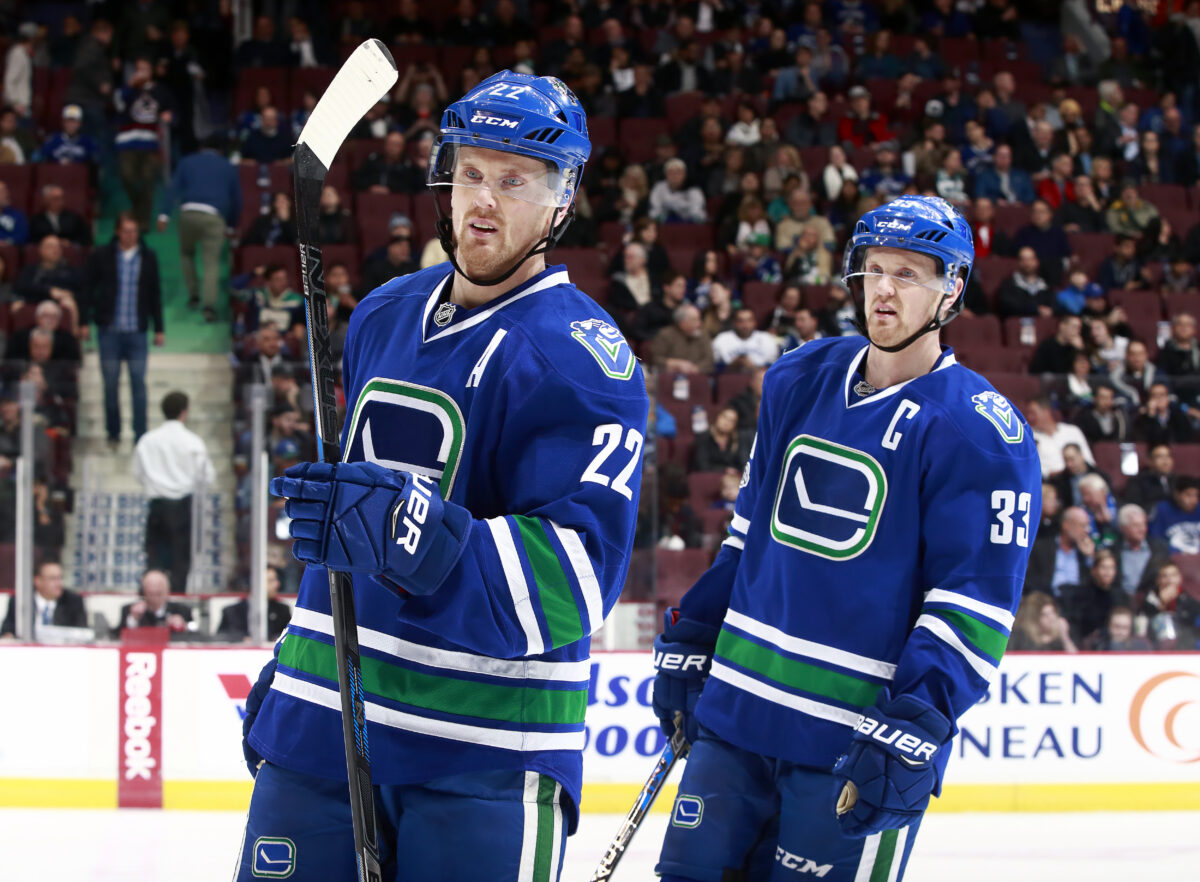
Then-GM Brian Burke hatched a plan to acquire Daniel and Henrik Sedin. He traded McCabe and a future first-round draft pick to the Blackhawks for the fourth-overall pick in the 1999 NHL Entry Draft. He then flipped the fourth-overall selection to the Tampa Bay Lightning, along with two third-round picks, for the first-overall selection. That pick was then flipped again to the Atlanta Thrashers for the second-overall selection and a conditional third-round pick. The Thrashers agreed to take Patrik Stefan, and the Sedin twins became Vancouver Canucks.
Related: The Sedin Twins and the 1999 NHL Entry Draft
It was a series of deals that live in Canucks fame. In a video for the team’s 50th anniversary season, Burke talked about the deals leading up to the draft.
Obviously, the Sedins became the cornerstone players for the Canucks through the 2000s and 2010s. Henrik became captain, both won multiple awards, and both sit on top of the all-time Canucks scoring list. This was a series of trades culminating in a massive win.
1. Canucks Land Markus Naslund From Penguins for Alek Stojanov
1996: Canucks Acquire Markus Naslund from Pittsburgh Penguins for Alek Stojanov
This trade is one of the most lopsided in NHL history let alone Canucks history.
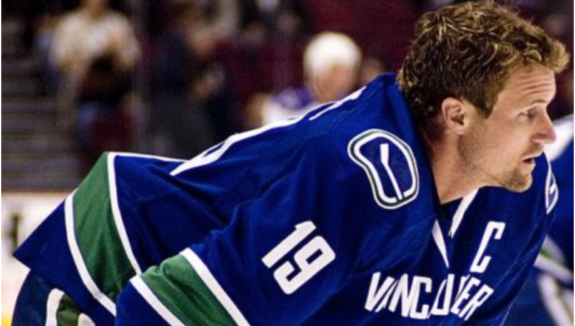
Playing behind elite offensive talent including Mario Lemieux, Jaromir Jagr, and Ron Francis, the Pittsburgh Penguins viewed Naslund as expendable if it meant getting some muscle to help protect their talented squad.
Big mistake. After the trade, Naslund went on to score 346 goals and 756 points as a Canuck, ranking third in points (behind the Sedins) and second in goals (behind Daniel). He also became the team Captain in September 2000, leading the team out of one of its darker eras of hockey.
You may also like:
- Canucks News & Rumors: Demko, Pettersson & Tocchet
- Prime Video to Carry National Monday Night Games in Canada
- Vancouver Canucks’ Best Trades With Vegas Golden Knights
- Takeaways From Predators’ Block Party Game 2 Win Over Canucks
- Predators Shut Down Canucks With 4-1 Win in Game 2
Naslund became the face of the franchise and the driver of the famed and feared “West Coast Express” line. He went on to become a five-time NHL all-star, a finalist for the 2003 Hart Trophy, and the winner of the 2003 Lester B. Pearson Trophy. Not bad.
As for Alex Stojanov, he went on to score two goals and six points in 45 games with the Penguins and was out of the league just two years after the trade. Without a doubt, this is the greatest trade in Canucks history.
The Worst
The trades above were all excellent and helped shape the franchise in their respective eras. This next group of trades helped shape the franchise too, but probably not in the way the Canucks were hoping.
5. Canucks Deal Michael Grabner and a First for Keith Ballard
2010: Canucks acquire Keith Ballard and Victor Oreskovich from the Phoenix Coyotes in exchange for Steve Bernier, Michael Grabner and a 2010 1st RD pick
Seeing this trade on a bottom-five list might surprise some people because the year after Ballard was acquired, the Canucks made their push to Game Seven of the 2011 Stanley Cup Final. Those two things are mutually exclusive, however, as the defenceman never made an impact in the playoff race.
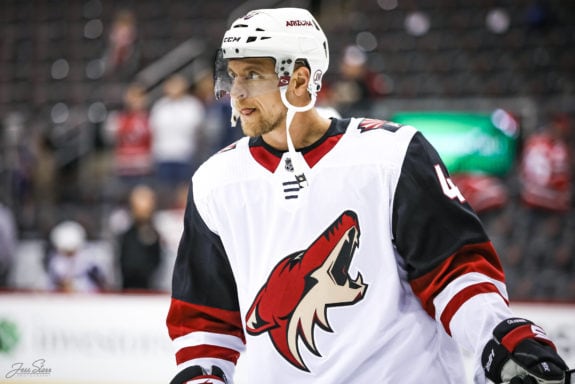
Ballard was an absolute bust with Vancouver. Coming off of five very productive seasons between Florida and the then-Phoenix Coyotes, he was seen as a key acquisition that would help solidify the Canucks’ depth as they pushed for a Stanley Cup. That would never materialize, as the blueliner went on to score a paltry 16 points in 148 games over three seasons in Vancouver while consistently residing in then-head coach Alain Vigneault’s doghouse. Not the return they were looking for.
Grabner meanwhile went on to have a solid NHL career, carving himself a niche as an elite penalty killer with blazing speed that can score. He had 276 points in 640 NHL games; only 11 points and 20 games came as a Canuck. The Canucks have a history of giving up on young players too quickly, and he is no exception.
Related: Coyotes’ Grabner Could Be Trade Bait
The rest of the deal is a wash. Steve Bernier never replicated the success he had in Vancouver, Quinton Howden played 97 NHL games, and Victor Oreskovich played a combined 36 games as a Canuck before retiring from hockey in 2012.
4. Canucks Acquire Pit Martin From the Chicago Blackhawks
1977: Canucks acquired Pit Martin from Blackhawks for future considerations (Murray Bannerman)
This is, perhaps, one of the most underrated bad trades in Canucks history. Prior to doing this article, I didn’t even know about it.
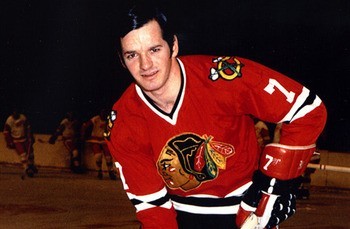
Starting with Martin, the Canucks were acquiring a skilled two-way centreman who had been a star for the Blackhawks. He made the all-star game four straight seasons and won the Bill Masterton Memorial Trophy in the 1969-70 season.
When the Canucks acquired him, he was in the latter part of his career and would only play two seasons for his new team. His acquisition didn’t make a lot of sense for a Vancouver squad that was one of the worst teams at the time.
He was initially acquired for future considerations which later turned into goaltender Murray Bannerman. He spent a few years as the backup to all-star Blackhawks goaltender Tony Esposito before taking over in the 1982-83 season. He would go on to become sixth on the Blackhawks all-time wins list, turning in six quality seasons before retiring in 1988.
While the Canucks were set in goal with Richard Brodeur during the period when Bannerman rose to stardom, it’s still a bad trade. They effectively gave up an excellent starting goalie for two seasons of an older centre. For a rebuilding team, not a great look.
3. Canucks Send Ryan Kesler to Anaheim for Nick Bonino and Luca Sbisa
2014: Canucks deal Ryan Kesler and a 2015 3rd RD pick to the Anaheim Ducks in exchange for Nick Bonino, Luca Sbisa and a 2014 1st and 3rd RD Pick
This might be a more controversial pick as one of the worst trades in Canucks history. It was no secret that Canucks general manager Jim Benning had his hands tied; Kesler had requested a trade and conventional wisdom said he would only accept a trade to a select few teams, including the Ducks.
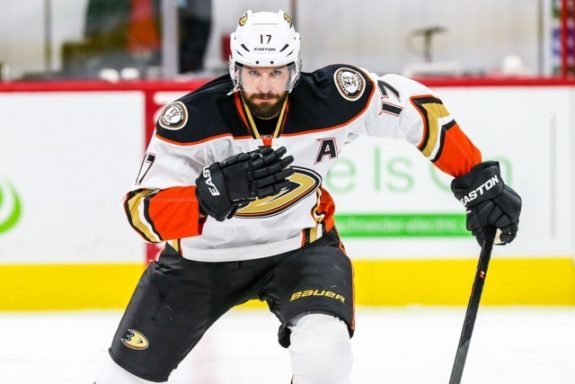
The trade itself isn’t why this trade makes the list; admittedly, the Canucks were a bit handcuffed and had to make a deal. It’s the return that lands the trade on this list and what it ultimately meant for the franchise.
Bonino only played one, albeit solid, season in Vancouver before being moved to Pittsburgh for Brandon Sutter. Sutter is still with the Canucks and has been a much-maligned player, largely due to his contract. Sbisa, meanwhile, was probably one of the worst regular blueliners for a struggling team, given far too many minutes given his ability.
Related: Canucks Big Winner in Pearson Trade
Jared McCann was eventually dealt for Panthers defenceman Erik Gudbranson, who was much like Sbisa in that he was a replacement-level player and a lightning rod for criticism. The Canucks never used the third-round pick they acquired, moving it to the New York Rangers in exchange for Derek Dorsett (which worked out well!) Despite Dorsett providing a silver lining, it was a series of moves that seemed to define this era of hockey in Vancouver, and not in a good way.
2. Canucks Acquire Tiger Williams and Jerry Butler from the Toronto Maple Leafs
1980: Canucks acquire Tiger Williams and Jerry Butler from the Toronto Maple Leafs in exchange for Rick Vaive and Bill Derlago
Tiger may have been a fan favourite and quality player for the Canucks in the 1980s, but this trade was still terrible.
Williams was a quality Canuck, posting 165 points and 1325 penalty minutes in 312 games with the team. He was a fan favourite known for living in the penalty box and was an integral piece in the Canucks’ 1982 run to the Stanley Cup Final. Jerry Butler, however, was a bust, scoring 19 goals and 39 points in 128 games. Not great.
Rick Vaive went on to be an elite NHL scorer, potting 441 goals and 347 assists over his 876 game NHL career. Only 13 of those goals and 47 of those games were for the Canucks.
Bill Derlago was no slouch either. After suffering a major knee injury in his rookie season with Vancouver, he was packaged with Vaive and ended up becoming a star himself, scoring 189 goals and 416 points in 555 games. This trade was yet another example of the Canucks giving up on young players too early and it cost them again.
1. Canucks Send Cam Neely and a First to Bruins
1986: Canucks trade Cam Neely and a 1987 1st RD pick to the Boston Bruins for Barry Pederson
This should come as no surprise. In a trade widely viewed as the worst in Canucks history and one of the worst in NHL history, the Canucks gave up a lot and got very little in return.
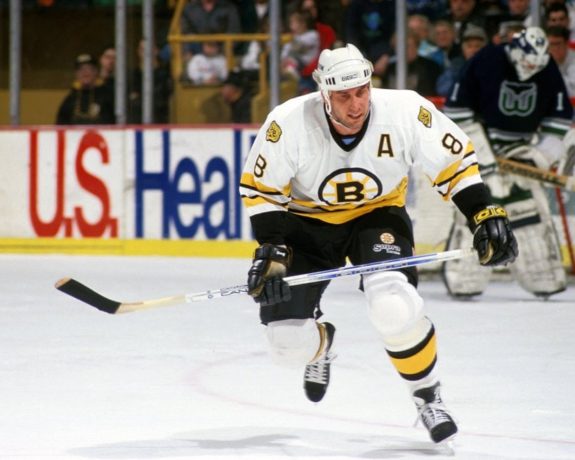
Neely went on to have an extremely productive career in Boston, scoring 344 goals and 590 points in just 525 games with the Bruins. His physical style of play and skill endeared himself to Bruins fans, and he is still considered a legend there. The draft pick ended up being the third-overall selection (the Canucks were bad) which turned into Glen Wesley. Wesley played 1457 NHL games and added 537 points as a steady, two-way blueliner over his long career.
Barry Pederson, considered an elite young centre at the time of acquisition, was never the player he was in Boston. He had a couple of productive seasons, scoring 60 goals and 137 assists in four seasons with the Canucks. However, prior surgeries had taken their toll, taking him out of the league by 1992. Without question, this was the worst trade in Vancouver Canucks history.
